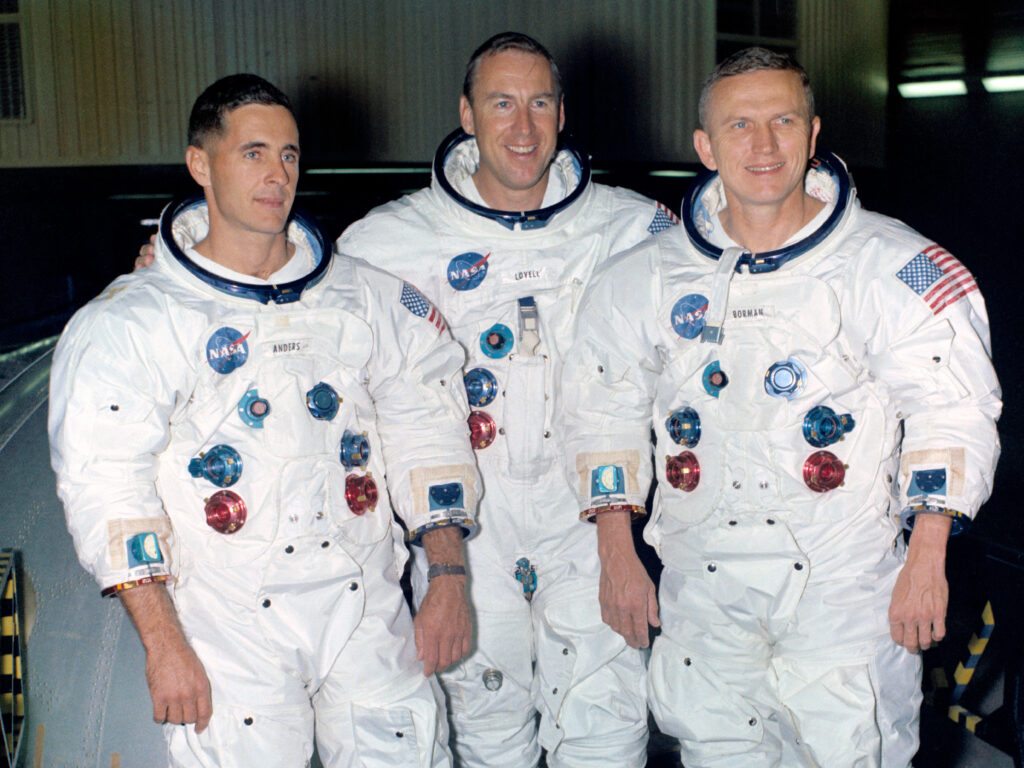By William McQuilkin, retired U.S. Navy rear admiral
I remember reading a moving obituary for William Anders around this time last year. Anders was the Apollo 8 astronaut who, while orbiting the moon on Christmas Eve in 1968, snapped the iconic photograph since called “Earthrise.”
He captured our fragile blue planet as seen over the moon’s dull grey horizon and against the blackness of space. It was the first time that humans had broken the bonds of Earth’s gravity, the first manned lunar orbit, giving the world the chance to see the Earth in a different perspective and a whole new light. The picture has been described by Galen Rowell as “the most influential environmental photograph ever taken.”

Reading Anders’ obituary, I also couldn’t help but be reminded of watching the Apollo 11 moon landing the following year with my family on an old black-and-white television. As a child of the ’60s, this was a very exciting moment, almost unbelievable at the time, the fulfillment of President John F. Kennedy’s goal of going “to the moon in this decade.”
Years later I was struck by what astronaut Neil Armstrong, the mission commander for Apollo 11 and the first man to walk on the moon, said in a Life magazine interview, “When you are looking at the Earth from the lunar distance, its atmosphere is just unobservable. The atmosphere is so thin, and such a minute part of the Earth … The atmosphere of the Earth is a small and valuable resource. We’re going to have to learn how to conserve it and use it wisely.”
Both Anders and Armstrong recognized the awe-inspiring beauty of the Earth, but also its uniqueness and fragility. I think that this is instructive. No one could accuse these guys of being overly sensitive or of a certain liberal bent. They were fighter pilots and test pilots. And yet, they showed real concern for our planet and the air that we breathe.
Armstrong’s forewarning about the need to learn how to conserve our atmosphere has never been more urgent due to our warming world. In climate scientist Rob Jackson’s excellent new book, “Into the Clear Blue Sky,” he provides a bold vision for restoring the atmosphere and a positive examination of cutting-edge climate solutions. As he says in the book, “There is no one path to restoring the atmosphere. There are many paths.”
Whatever paths we choose, I think we can all agree that we need to change our way of thinking. The fires and floods, strange weather patterns, bathtub-like ocean temperatures and the bleaching of our coral reefs are impacting our families and communities. The impacts are no longer subtle, and we know that we must act. As Emerson said, “We know better than we do.”
The good news is we know how to do this. We have done it before. In the 1980s the world came together to ratify the Montreal Protocol, which set limits on ozone-depleting gases. Since that time the hole in the ozone has been shrinking and the ozone layer is well on the way to recovery. While this was a bipartisan effort in the U.S., it was a Republican president, President Ronald Reagan, whose leadership led to the U.S. ratifying the treaty.
The other bit of good news is that nature is resilient. She can recover if we give her half a chance. Something that brought this home to me was stumbling upon 100-year-old oak trees with massive trunks on my farm with remnants of an old wire fence coming right out of the center of the living tree. The trees had just incorporated some old farmer’s fence into the thick woody trunk and just went on growing.

With respect to our changing climate, many scientists believe that we are still within the range of adaptive capacity for both our human and natural systems, but here again, we must act. We have the tools and the technological know-how; what we lack is the political will to act.
Anders’ “Earthrise” photograph reminds us that the Earth is our only home, a living world of beauty, mystery and wonder. The picture can also inspire us to become more aware of our environment, our connection to the Earth and its oceans, the challenge of weather and the important work before us.
I now see this picture in a new light, as both a homage and a warning. Let us rededicate ourselves to preserving the planet for our children and grandchildren and let us start right where we are, in our own local communities. Let us begin.
William McQuilkin is a retired U.S. Navy rear admiral who lives in Ponte Vedra Beach.
Sign up for The Invading Sea newsletter by visiting here. To support The Invading Sea, click here to make a donation. If you are interested in submitting an opinion piece to The Invading Sea, email Editor Nathan Crabbe at nc*****@*au.edu.



